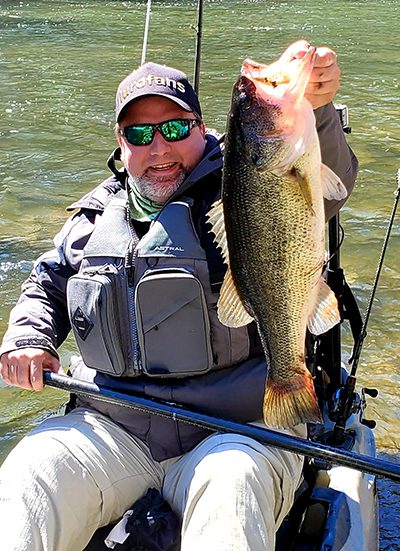We have reached the three seasons of spring. We have pre-spawn, spawn, and post spawn and you can find bass in all three stages at the same time. If you see fisherman controlling bedding areas, there is nothing to worry about. You can hit bass in so many directions that the chance of not catching bass is very slim. Once you see the water temperatures hit 50 degrees, you will notice a change in bass behavior has already started. The urge to feed and procreate is so strong that bad weather conditions are not even a factor at a point. We all know that post-frontal conditions are the cause of a nonproductive day until you get near the spawn.
If you’re just getting into bass fishing, you need to understand the basic fundamentals of the life cycle of your fish. Bass this time of year will migrate much like a bird do when flying south for the winter. They will migrate to different features of the lake based on temperature and time of year. In the spring, when bass think about the spawn, nature tells them to make their pilgrimage to back to where it all began. To make it simple for the beginner, hit the usual spots like the secondary points leading into the backs of creeks where the spawning bays are. Do not sit in one area too long because this is counterproductive. You just need to get a clue where the bass are concentrating. Lots of times when you find one, you will find a school of them and firing up that school is so easy. To fire up a school, you just have to get these bass back in the water as fast as you can and get that lure back in. They will get very aggressive when they are in a competitive atmosphere.
Now, for those with experience, you can play that elevation game. Here in the mountains, the water temps will stay cold for a longer time period than water in the lower elevations. Starting further south or just going lower at the end of winter will put you ahead of the season, with the water temperatures rising earlier in the season. You will want to move up in elevation or go north to extend that part of the spawn season you desire. Once you reach the end of the season, you can move back down to get past the post-spawn funk. Having experience will pay off once you figure this out.
You can also target just the big bass by using those big baits. The problem with warming temperatures is that all the small bass get a ferocious appetite. You will catch a lot of small ones before catching you quality sizes. To eliminate this ratio, start with using your big baits or upsize as much as you can. Your red colors are good for those big females looking for the iodine in crayfish that aids in breaking those egg sacks free for the spawn. Try these methods and have fun this year because that is what it is all about.
Scott Norton is a Western North Carolina native. Born in Asheville, N.C., he is a long-time hunter, angler and weekend warrior.
